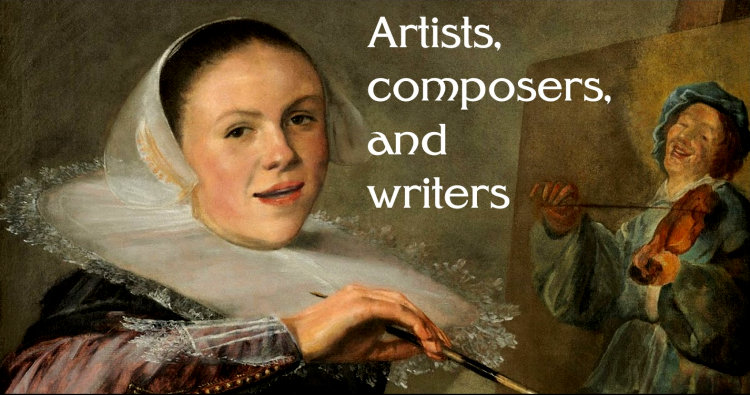6. Relief from Sobriety.
Whether in the theater of Racine and Corneille or the painting of Claude and Poussin, one of the salient characteristics
of French 17th-century art is its serious-minded Classicism. It would resurface in later centuries with, say, the paintings
of David or the drama of Cocteau. But this highly speculative class will explore its opposite, the equally-French delight in
taking a break from academic sobriety through excursions into the world of color, make-believe, sensuality, and the exotic.
One example is the painting above, Watteau’s image of amorous couples on a voyage to Cytherea, Venus' isle of love.
I make no claim that escapism is a defining aspect of French art, or even an especially important one. But in contrast to the
highly-focused classes on the Italian Renaissance or the Dutch Golden Age, it offers the opportunity to cut though a wide swath
of French culture, over 200-year span. Versailles, for instance, is known for its vistas of dynastic splendor and divine right.
But we shall look at the fanciful groves hidden in its fringes under the Sun King, or the make-believe farm where, a century
later, Marie Antoinette and her ladies could play shepherdesses.
Then the Revolution would come, Neoclassicism would return (not necessarily in that order), and the stylistic battle would
begin again…
The script, videos, and images will be posted immediately after class.
Here are brief bios of the artists and poets considered in the class, listed in chronological order of birth.
You can access all biographies via the BIOS link on the syllabus page.
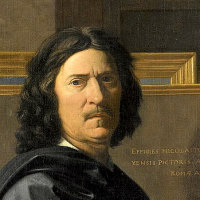 |
Nicolas Poussin, 1594–1665. French painter, largely active in Rome.
One of the preeminent French painters of his century, and its outstanding classicist, his work includes historical, religious, and mythological subjects, some focusing on the figures in the manner of Raphael, other set in classical landscapes similar to those of Claude Lorrain.
|
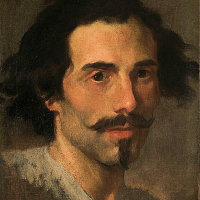 |
Gianlorenzo Bernini, 1598–1680. Italian sculptor and architect.
He is to the Italian Baroque what Michelangelo was to the Renaissance, the supreme master of many arts. The sense of movement and drama in his sculpture carries through into his architecture and even his town planning, such as the piazza before St. Peter's.
|
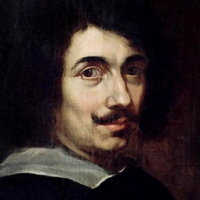 |
Claude Gellée (Claude Lorrain), 1604–82. French landscape painter, largely active in Rome.
His Arcadian and harbor scenes, principles of composition, and use of light earned him the reputation as the greatest of all landscape painters, and his influence especially in France, Britain, and America lasted until the mid-19th century, not only in art but also landscape gardening.
|
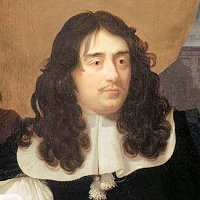 |
Louis Le Vau, 1612–70. French architect.
As principal architect to Louis XIV, Le Vau designed major additions to the palaces of Vincennes, the Louvre, and most notable Versailles. He is also noted for the moated chateau of Vaux-le-Vicomte and the Collège des Quatre Nations, now the Institut de France, across from the Louvre.
|
 |
André Le Nôtre, 1613–1700. French landscape architect.
Le Nôtre worked with Louis Le Vau at Vaux-le-Vicomte and was engaged by Louis XIV to achieve similar marvels of garden design on an even larger scale at Versailles. A pioneer in the field, his work was emulated at other great houses around Europe.
|
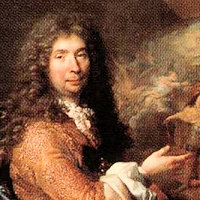 |
Charles Le Brun, 1619–90. French painter and sculptor.
One of the geniuses behind Versailles, his Bassin de Apollon fountain shows Apollo (as Louis XIV) drawing the chariot of the Sun out of the waters.
|
 |
Jean-Baptiste Poquelin(Molière), 1622–73. French playwright.
Molière might be set beside Racine as the comic and tragic masks respectively of French classical theatre. A working actor himself (he died acting in one of his own plays), he had a practical sense of what worked with an audience, including devices taken from popular comedy. But his willingness (like Shakespeare's) to occasionally write farce should not detract from his control of the French language, which was as great as Racine's.
|
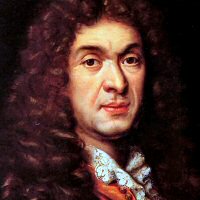 |
Jean Baptiste Lully, 1632–87. French composer of Italian origin.
Lully became master of music to Louis XIV, writing music in all genres, but most especially operas and ballets. His operas include Alceste (1675), Atys (1676), Persée (1682), and Armide (1686).
|
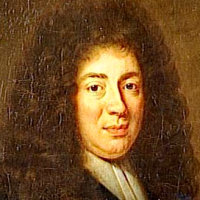 |
Philippe Quinault, 1635–88. French playwright.
Although also active in the spoken theatre, Quinault is principally noted as the librettist for all Rameau's operas, based on classical subjects.
|
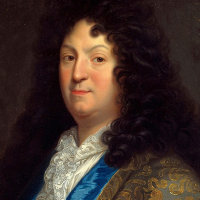 |
Jean Racine, 1639–99 . French playwright.
Racine's tragedies such as Bérénice (1670) and Phèdre (1677) display his control of the classical unities of time, subject, and setting, and the flexibility and balance of his handling of the 12-syllable French Alexandrine. With Corneille and Molière, he comprises the Trinity of classic French drama.
|
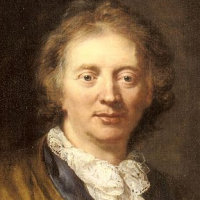 |
François Couperin, 1668–1733. French composer.
The supreme master of the harpsichord in his time, and organist and chamber composer to both Louis XIV and XV, Couperin left hundreds of works for the keyboard and chamber ensembles, many of which have descriptive titles that function like miniature tone poems.
|
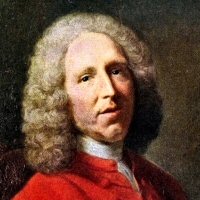 |
Jean-Philippe Rameau, 1683–1764. French composer.
Rameau first won fame as a music theorist and composer of harpsichord music. It was not until his 50th year that he wrote the first of the elaborate operas (tragédies en musique) on which his fame now rests. These include Hippolyte et Aricie (1733), Les Indes galantes (The Amorous Indes, 1735), Dardanus (1737), and the posthumous Les Boréades (Sons of the North Wind, 1763).
|
 |
Jean-Antoine Watteau, 1684–1721. French painter.
Influenced by Rubens, but developing his own refined elegance, he was the leading Rococo painter of the age, virtually inventing the genre of the fête galante.
|
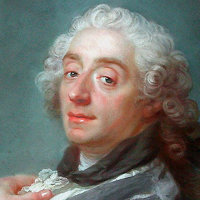 |
François Boucher, 1703–70. French painter.
His many works, which virtually define the French rococo style, include several elegantly erotic treatments of mythological subjects, such as his Jupiter and Callisto, but also genre scenes, erotica, and even landscapes.
|
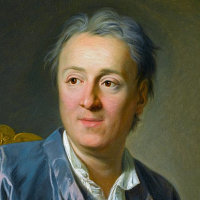 |
Denis Diderot, 1713–84. French philosopher, writer, and critic.
One of the key figures of the Age of Reason, his chief fame is as co-founder (with d'Alembert) and editor of the Encyclopédie, which brought together scientific knowledge and Enlightenment thought.
|
 |
Jean le Rond d’Alembert, 1717–83. French mathematician and philosopher.
Internationally celebrated as a mathematician, he also studied law, medicine, and the natural sciences. So it was as a polymath that he joined with Denis Diderot in founding and for a time co-writing the Encyclopédie.
|
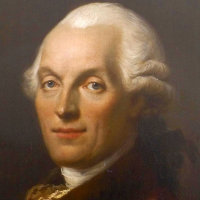 |
Richard Mique, 1728–94. French architect.
Mique was a relatively conventional architect in the neo-classical style, but he is best remembered for the rustic hameau he created for Marie Antoinette in the grounds of Versailles. Unfortunately his devotion to the Queen led to his execution in the last days of the Reign of Terror.
|
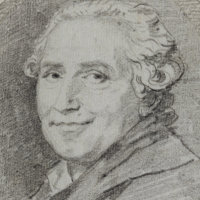 |
Jean-Honoré Fragonard, 1732–1806. French painter.
Fragonard, who has been described as the "fragrant essence of the 18th century," was surely the most exuberant of all Rococo painters. It is easy to see how his fondness for galant subjects of love and dalliance should have led him to the myths of Ovid. But his series of "imaginary portraits" reveal an artist of strength and insight.
|
 |
André Grétry, 1741–1816. French composer.
Grétry was born in Liège, Belgium, but took French citizenship. He was a leading composer of opéras comiques, lighter operas with spoken dialogue, many of which continued to be popular throughout the 19th century.
|
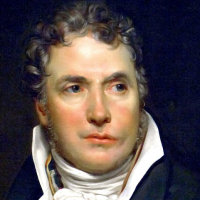 |
Jacques-Louis David, 1748–1825. French painter.
The leading Neoclassical artist of his day, David replaced rococo frivolities with stern history paintings with strong moral content. He was a dedicated supporter of the Revolution and politically active as a Deputy. He was imprisoned briefly after the fall of Robespierre, but resurfaced as principal painter to Napoleon. Through his many pupils, he influenced French salon style for a generation.
|
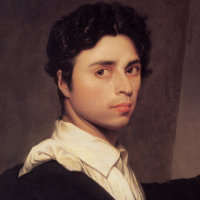 |
Jean-Dominique Ingres, 1780–1867. French painter.
Ingres was trained in the academic tradition, and indeed spent 7 years as Director of the French Academy in Rome. Although one of the great masters of French Romantic era, his style was always marked by a cool classicism and precision of line, in contrast to the freer handling of paint by his contemporary Delacroix.
|
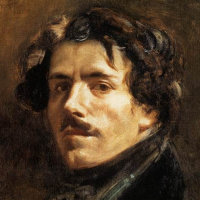 |
Eugène Delacroix, 1798–1863. French painter.
The leading French painter of the Romantic movement, he is known for his brilliant Rubensian color and his dramatic compositions. Especially in the first half of his career, these included political themes, such as The Massacre at Chios (1824) and Liberty Leading the People (1830), as well as subjects from Romantic literature. He also visited North Africa, and was constantly fascinated by the exotic.
|
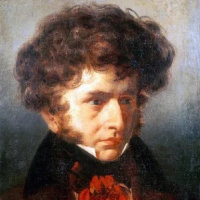 |
Hector Berlioz, 1803–69. French composer, conductor, and critic.
The leading French composer of the Romantic era, Berlioz was a master of orchestration and dramatic effect. A fervent admirer of Shakespeare (and a Shakespearean actress, Harriet Smithson), his works often have a stong literary quality that can obscure their musical craftsmanship. He was unable to get a full performance of his operatic masterpice, The Trojans (1863), but it has come into its own in recent years.
|
















































